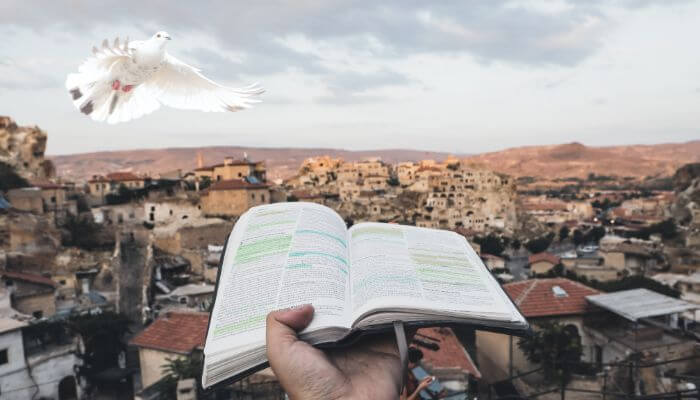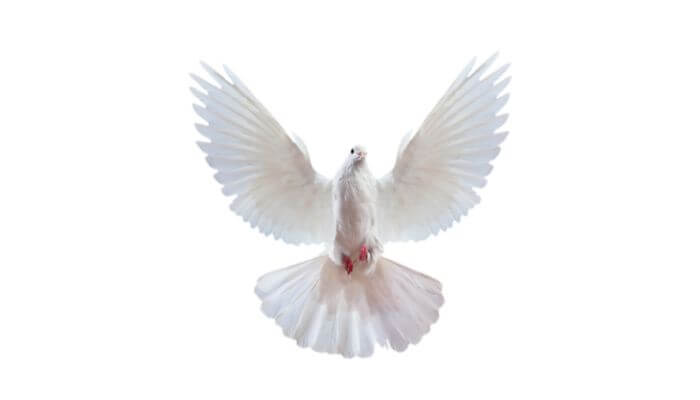Universally recognized regardless of faith, the modern-day symbolism of pigeons and doves stems from the Christian Bible.
We see white doves especially, as being symbols of hope, peace, freedom and love.

Where it all began
The Bible contains lots of different references to many different animals across its various stories and testimonies.
Of course, they may not all be mentioned, but we are told that every animal in the world (two of each to be exact) was taken by Noah into his ark before the Great Flood.
The passages that first introduce the main ideas behind the symbolism of the dove is in the story of Noah as told in Genesis 8:6-12.
After the 40 days of rain had stopped, Noah sent out birds to see if there was any dry land. The raven went first. It was followed by a dove.

Neither found land. After a further 7 days, he sent out another dove. This dove returned with an olive leaf in its beak.
It had found land which gave the occupants of the ark hope that they’d soon be able to leave their vessel.
Not only did the story of Noah’s Ark lay the foundations for the hope that the Dove has come to symbolize but it also spawned the phrase “holding out an olive branch”.
More Mentions and More Symbolism
Besides the story of the Ark, there are plenty of mentions of doves and pigeons throughout the Bible, in both the Old Testament and New Testament.
In almost all of these separate instances, they are mentioned as a symbol of sacrifice, atonement and overall devotion to God.
You will notice that, ultimately, pigeons are mentioned in the Bible for being used as two main types of offerings:
- burnt offerings
- sin offerings
A burnt offering is seen as a symbol of total devotion to God, as well as a wider, more general sense of atonement, burnt offerings were volunteered.
Sin offerings were compulsory and symbolized a sacrifice being made to cleanse a person from their sin.
In a notable reference, God provided both doves and pigeons as a less expensive, opulent option of sacrifice for Israelites who were not able to afford to bring something larger like a lamb to the temple.

Replacing a lamb with a more affordable pigeon was a way to ensure that the follower in question was still available to receive atonement and display their devotion, no matter their prospects or wealth.
Here are some of the most referenced passages of the Bible that contained allusions and direct mentions of doves and pigeons:
“So the Lord said to him, “Bring me a heifer, a goat and a ram, each three years old, along with a dove and a young pigeon.”
Genesis 15:9
“Anyone who cannot afford a lamb is to bring two doves or two young pigeons to the Lord as a penalty for their sin—one for a sin offering and the other for a burnt offering.”
Leviticus 5:7
“As soon as Jesus was baptized, he went up out of the water. At that moment heaven was opened, and he saw the Spirit of God descending like a dove and alighting on him.”
Matthew 3:16
“And to offer a sacrifice according to that which is said in the law of the Lord, A pair of turtledoves, or two young pigeons.”
Luke 2:24
As you can see, the passages all hold a very similar meaning, either of a sacrifice to show devotion to God, or as a representation of the presence of God in a time of strong faith like a moment of baptism.
Whether or not you share in the Christian faith, it is very interesting how the reputation of the humble dove/pigeon has made such an impact on world culture and religious history.
Next time you see a mourning dove or wild pigeon in the street, just think about all of the different ways that its image is revered around the world!
